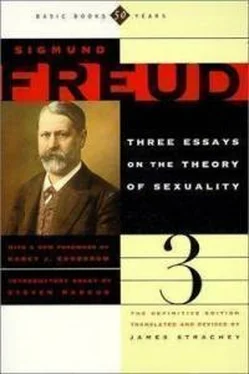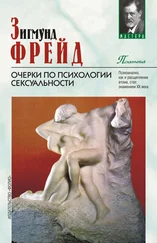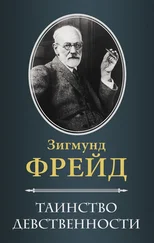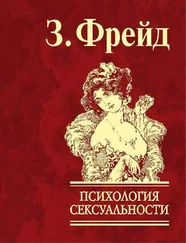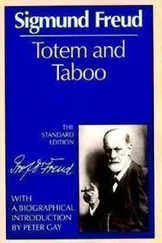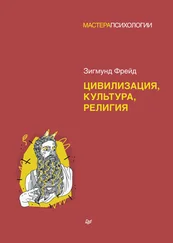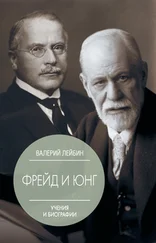We have furthermore remarked that some of the examined perversions can be comprehended only by assuming the union of many motives. If they are amenable to analysis—disintegration—they must be of a composite nature. This may give us a hint that the sexual impulse itself may not be something simple, that it may on the contrary be composed of many components which detach themselves to form perversions. Our clinical observation thus calls our attention to fusions which have lost their expression in the uniform normal behavior.
4. THE SEXUAL IMPULSE IN NEUROTICS
*Psychoanalysis.*—A proper contribution to the knowledge of the sexual impulse in persons who are at least related to the normal can be gained only from one source, and is accessible only by one definite path. There is only one way to obtain a thorough and unerring solution of problems in the sexual life of so–called psychoneurotics (hysteria, obsessions, the wrongly–named neurasthenia, and surely also dementia præcox, and paranoia), and that is by subjecting them to the psychoanalytic investigations propounded by J. Breuer and myself in 1893, which we called the "cathartic" treatment.
I must repeat what I have said in my published work, that these psychoneuroses, as far as my experience goes, are based on sexual motive powers. I do not mean that the energy of the sexual impulse merely contributes to the forces supporting the morbid manifestations (symptoms), but I wish distinctly to maintain that this supplies the only constant and the most important source of energy in the neurosis, so that the sexual life of such persons manifests itself either exclusively, preponderately, or partially in these symptoms. As I have already stated in different places, the symptoms are the sexual activities of the patient. The proof for this assertion I have obtained from the psychoanalysis of hysterics and other neurotics during a period of twenty years, the results of which I hope to give later in a detailed account.
Psychoanalysis removes the symptoms of hysteria on the supposition that they are the substitutes—the transcriptions as it were—for a series of emotionally accentuated psychic processes, wishes, and desires, to which a passage for their discharge through the conscious psychic activities has been cut off by a special process (repression). These thought formations which are restrained in the state of the unconscious strive for expression, that is, for discharge , in conformity to their affective value, and find such in hysteria through a process of conversion into somatic phenomena—the hysterical symptoms. If, lege artis , and with the aid of a special technique, retrogressive transformations of the symptoms into the affectful and conscious thoughts can be effected, it then becomes possible to get the most accurate information about the nature and origin of these previously unconscious psychic formations.
*Results of Psychoanalysis.*—In this manner it has been discovered that the symptoms represent the equivalent for the strivings which received their strength from the source of the sexual impulse. This fully concurs with what we know of the character of hysterics, which we have taken as models for all psycho–neurotics, before they have become diseased, and with what we know concerning the causes of the disease. The hysterical character evinces a part of sexual repression which reaches beyond the normal limits, an exaggeration of the resistances against the sexual impulse which we know as shame and loathing. It is an instinctive flight from intellectual occupation with the sexual problem, the consequence of which in pronounced cases is a complete sexual ignorance, which is preserved till the age of sexual maturity is attained. [29]
This feature, so characteristic of hysteria, is not seldom concealed in crude observation by the existence of the second constitutional factor of hysteria, namely, the enormous development of the sexual craving. But the psychological analysis will always reveal it and solves the very contradictory enigma of hysteria by proving the existence of the contrasting pair, an immense sexual desire and a very exaggerated sexual rejection.
The provocation of the disease in hysterically predisposed persons is brought about if in consequence of their progressive maturity or external conditions of life they are earnestly confronted with the real sexual demand. Between the pressure of the craving and the opposition of the sexual rejection an outlet for the disease results, which does not remove the conflict but seeks to elude it by transforming the libidinous strivings into symptoms. It is an exception only in appearance if a hysterical person, say a man, becomes subject to some banal emotional disturbance, to a conflict in the center of which there is no sexual interest. Psychoanalysis will regularly show that it is the sexual components of the conflict which make the disease possible by withdrawing the psychic processes from normal adjustment.
*Neurosis and Perversion.*—A great part of the opposition to my assertion is explained by the fact that the sexuality from which I deduce the psychoneurotic symptoms is thought of as coincident with the normal sexual impulse. But psychoanalysis teaches us better than this. It shows that the symptoms do not by any means result at the expense only of the so called normal sexual impulse (at least not exclusively or preponderately), but they represent the converted expression of impulses which in a broader sense might be designated as perverse if they could manifest themselves directly in phantasies and acts without deviating from consciousness. The symptoms are therefore partially formed at the cost of abnormal sexuality. The neurosis is, so to say, the negative of the perversion. [30]
The sexual impulse of the psychoneurotic shows all the aberrations which we have studied as variations of the normal and as manifestations of morbid sexual life.
( a ) In all the neurotics without exception we find feelings of inversion in the unconscious psychic life, fixation of libido on persons of the same sex. It is impossible, without a deep and searching discussion, adequately to appreciate the significance of this factor for the formation of the picture of the disease; I can only assert that the unconscious propensity to inversion is never wanting and is particularly of immense service in explaining male hysteria. [31]
( b ) All the inclinations to anatomical transgression can be demonstrated in psychoneurotics in the unconscious and as symptom–creators. Of special frequency and intensity are those which impart to the mouth and the mucous membrane of the anus the rôle of genitals.
( c ) The partial desires which usually appear in contrasting pairs play a very prominent rôle among the symptom–creators in the psychoneuroses. We have learned to know them as carriers of new sexual aims, such as peeping mania, exhibitionism, and the actively and passively formed impulses of cruelty. The contribution of the last is indispensable for the understanding of the morbid nature of the symptoms; it almost regularly controls some portion of the social behavior of the patient. The transformation of love into hatred, of tenderness into hostility, which is characteristic of a large number of neurotic cases and apparently of all cases of paranoia, takes place by means of the union of cruelty with the libido.
The interest in these deductions will be more heightened by certain peculiarities of the diagnosis of facts.
Alpha. There is nothing in the unconscious streams of thought of the neuroses which would correspond to an inclination towards fetichism; a circumstance which throws light on the psychological peculiarity of this well understood perversion.
Beta. Wherever any such impulse is found in the unconscious which can be paired with a contrasting one, it can regularly be demonstrated that the latter, too, is effective. Every active perversion is here accompanied by its passive counterpart. He who in the unconscious is an exhibitionist is at the same time a voyeur, he who suffers from sadistic feelings as a result of repression will also show another reinforcement of the symptoms from the source of masochistic tendencies. The perfect concurrence with the behavior of the corresponding positive perversions is certainly very noteworthy. In the picture of the disease, however, the preponderant rôle is played by either one or the other of the opposing tendencies.
Читать дальше
